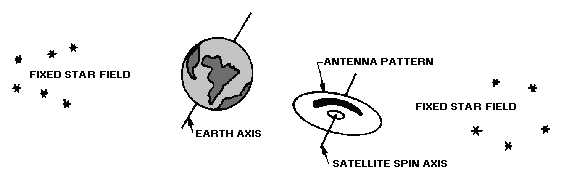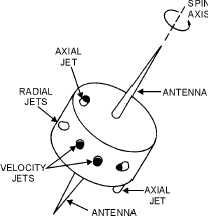4-8
Satellite Orientation
Satellite orientation in space is important for continuous solar cell and antenna orientation. Since the
primary source of power in most satellites is from solar cells, a maximum number of the solar cells must
be exposed to the sun at all times. The satellite antenna must also be pointed at the appropriate earth
terminals. Our communications satellites use what is termed spin stabilization to meet these important
requirements.
Spin stabilization operates on the principle that direction of the spin axis of a rotating body tends to
remain fixed in space. An example of spin stabilization is the effect of the rotation of the earth in keeping
its axis fixed in space. A satellite that has a spin axis parallel to the axis of the earth will maintain this
position since both axes are fixed in space. Figure 4-8 illustrates the use of this principle. It depicts an
equatorial orbit satellite used to keep a doughnut-shaped antenna pattern pointing toward the earth.
Figure 4-8.—Spin-stabilized satellite antenna pattern.
Once the system is in motion, spin stabilization requires virtually no additional energy. A spin-
stabilized satellite is usually constructed like a flywheel. Its heavier equipment is mounted in the same
plane and as close to the outside surface as possible.
After reaching its orbit, the radial jets are pulsed to start the satellite spinning. The satellite spin axis
is orientated to the axis of the earth by means of small axial jets. Velocity jets are used to place the
satellite in orbit position and provide velocity correction. Figure 4-9 is an example of spin stabilization.
Figure 4-9.—Spin-stabilized satellite controls.



